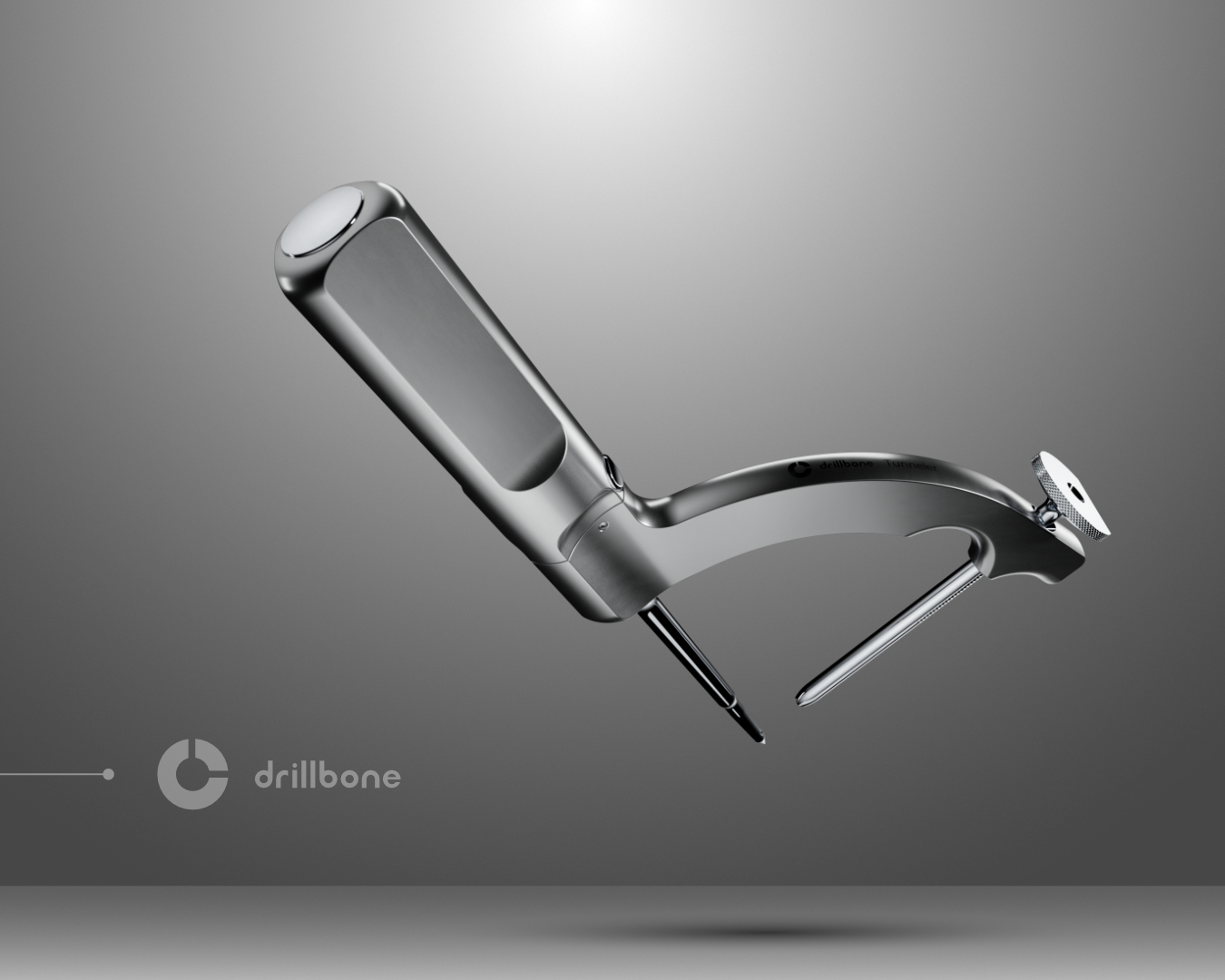Notice
The information on this website is intended for health professionals. I am a health professional according to §2a Act No. 40/1995 Sb., on the regulation of advertising, as amended. I confirm that I have familiarized myself with the definition of an expert according to this law. At the same time I confirm that I am aware of the risks to which a person who is not professional if they access website primarily intended for the professional public.
Products
Drillbone Tunneler
Less implants, pain, costs – MORE VALUE
Number of surgeries:
>2,000
VAS IMPROVEMENT: 6.10 → 1.23 (click to view a chart)
ASES IMPROVEMENT: 49.1 → 89.8 (click to view a chart)
The Drillbone Tunneler is a surgical guide specifically designed for transosseous rotator cuff repair. We introduced this medical device to the market in 2021.
From the 1930s through the 1990s, transosseous rotator cuff repair was the gold standard for treating rotator cuff tears. For most of that period, the procedure was performed in much the same way as first described by E. A. Codman in 1911. With the transition to arthroscopy, transosseous repair fell out of favor and arthroscopic or mini-open repairs using suture anchors reduced the incidence of postoperative stiffness and deltoid insufficiency. However, it did not significantly improve clinical outcomes.
Biomechanical studies and clinical evaluations have led to the evolution of the suture anchor repair technique, with the goal of replicating the biomechanical advantages of the original transosseous method as closely as possible. However, anchors remain a key limitation—they are foreign bodies, and while they perform well in biomechanical studies, they do not promote full biological healing.
The arthroscopic transosseous technique has emerged as a promising solution. It combines the benefits of efficient tendon-to-bone fixation with the minimally invasive nature of arthroscopy. This technique requires an instrument capable of preparing bone tunnels arthroscopically. Over the past 30 years, several such instruments have been developed, with commonly used devices including the ArthroTunneler, TransOs, TaylorStitcher, ArthroCuff and GT Tunneler.
Current evidence indicates that transosseous rotator cuff repair may represent the future of rotator cuff surgery. This technique achieves greater footprint coverage, improved pressure distribution across the repair site, and reduced micromotion at the tendon-bone interface. It also supports better vascularization at the healing site, promoting more natural biological healing. Studies have shown that postoperative pain resolves earlier, and the absence of implants eliminates associated complications. Furthermore, the tissue environment is more favorable for revision surgery, and cost analyses suggest substantial savings in rotator cuff repairs performed with the transosseous technique.
With our Drillbone Tunneler, transosseous rotator cuff repair becomes a more streamlined and efficient procedure. We have built upon the work of those who continued to refine these techniques over the past 30 years. The Drillbone Tunneler is based on a completely novel principle, making it a tool you will appreciate using. Our goal is to contribute to the ongoing advancement of rotator cuff repair. Transosseous rotator cuff repair adheres to the principles of value-based care, providing advantages to patients, surgeons, healthcare providers and payers.











